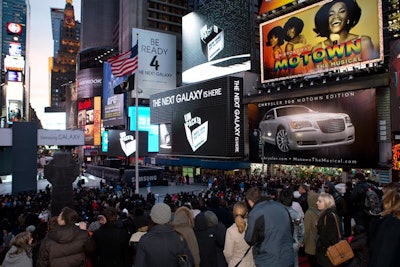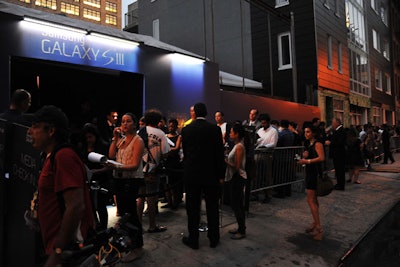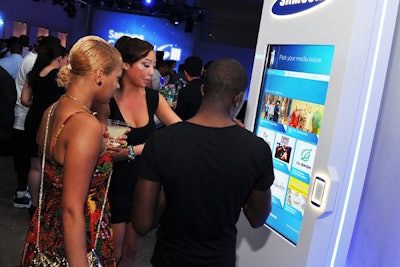In what was perhaps the biggest brand story last year, Samsung Mobile introduced the Galaxy S III smartphone with a whirlwind of events and ads. And the results of the campaign were impressive: The company managed to unseat Apple, outselling the tech giant’s popular iPhone in the second and third quarters of 2012, as well as grab a 32.3 percent market share of the U.S. mobile phone market in the fourth quarter.
The ambitious—and somewhat risky—launch of the Galaxy S III was Samsung Mobile’s biggest interactive marketing campaign ever in the U.S. and included a wide range of promotions. Central to the experiential efforts was getting the devices into the hands of consumers and allowing them to test the phone’s unique offerings. For instance, at the high-profile events in New York and Los Angeles, photo-op areas encouraged guests to play with the phone’s camera capabilities. The company also placed 40,000 interactive posters and 50 kiosks in malls and airports around the country, letting the public download free music, e-books, and other content while also calling attention to the S III’s N.F.C. and Wi-Fi-enabled file-sharing functions.
There were also pop-ups in high-traffic areas of major U.S. cities, concerts at the Cosmopolitan of Las Vegas, screenings co-hosted with The Hollywood Reporter, and a prominent presence at the London Olympics. As an official sponsor of the summer games, Samsung made the most of the opportunity, building an app, erecting pop-ups in Olympic Park and the surrounding area, and providing its handsets to producers and the opening ceremony’s performers.
Leading the charge for Samsung Telecommunications America is chief marketing officer Todd Pendleton, who explained the campaign represented a much broader concept for the brand. “When we’re using our best device to tell our story, it allows people to understand very clearly who we are and has a cascading effect on other products,” he told The Wall Street Journal last June.
Highly visible sponsorships and partners are also proving successful for the brand’s Galaxy Note II, aligning the latest handset with musicians, professional athletes, fashion designers, and even Hollywood stars. Most noticeable was the integration at the American Music Awards in November, which saw presenters like Will.i.am read the names of winners from a Galaxy Note II. The mobile maker even made a splash at Mercedes-Benz Fashion Week in New York, collaborating with Alexander Wang to use the phone-tablet hybrid to crowdsource ideas and create a limited-edition bag to be sold to raise funds for arts charity Art Start.
Such comprehensive marketing tactics have earned Samsung a big boost in sales as well as brand perception among consumers. The company sold more than 30 million Galaxy S III handsets in just 150 days and sold more than five million Galaxy Note II devices within two months of its release. The Korean company has also surpassed competitor Apple on YouGov’s Brand Index and jumped to ninth place on Interbrand’s list of the Best Global Brands of 2012.





















